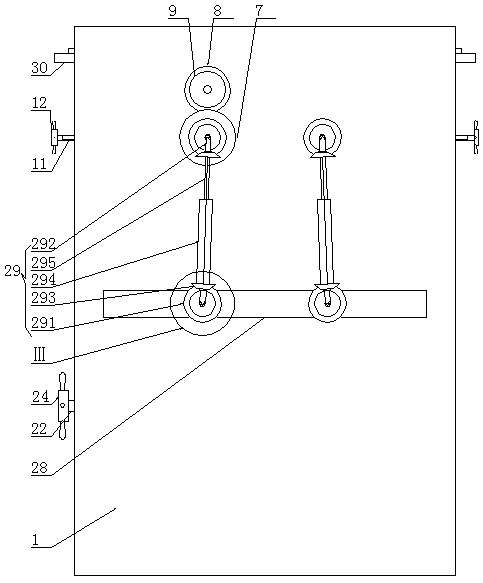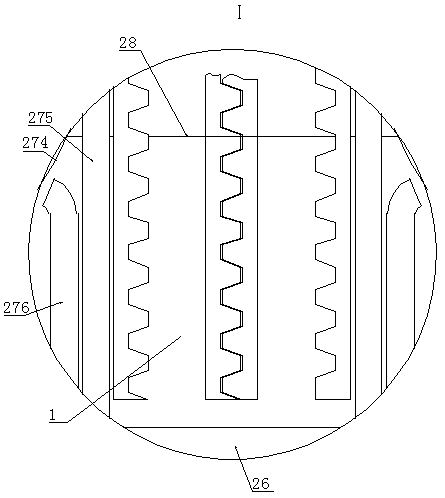Polyurethane fiberboard bonding device of wallboard special for livestock breeding
A polyurethane fiber, bonding device technology, applied in lamination devices, synthetic resin layered products, lamination and other directions, can solve the problems of affecting bonding efficiency, poor bonding effect, slow heating speed, etc., to increase bonding Good effect, good bonding effect, the effect of reducing heat loss
- Summary
- Abstract
- Description
- Claims
- Application Information
AI Technical Summary
Problems solved by technology
Method used
Image
Examples
Embodiment Construction
[0014] In order to make the purpose, technical solutions and advantages of the embodiments of the present invention clearer, the technical solutions in the embodiments of the present invention will be clearly and completely described below in conjunction with the drawings in the embodiments of the present invention. Obviously, the described embodiments It is a part of embodiments of the present invention, but not all embodiments. Based on the embodiments of the present invention, all other embodiments obtained by persons of ordinary skill in the art without creative efforts fall within the protection scope of the present invention.
[0015]A polyurethane fiberboard bonding device for special wallboards for animal husbandry, as shown in the figure, includes a support plate 1, and the upper part of the front side of the support plate 1 is provided with left and right symmetrical reserved holes 2, and the reserved holes 2 are respectively installed through bearing rotation. The f...
PUM
 Login to View More
Login to View More Abstract
Description
Claims
Application Information
 Login to View More
Login to View More - R&D
- Intellectual Property
- Life Sciences
- Materials
- Tech Scout
- Unparalleled Data Quality
- Higher Quality Content
- 60% Fewer Hallucinations
Browse by: Latest US Patents, China's latest patents, Technical Efficacy Thesaurus, Application Domain, Technology Topic, Popular Technical Reports.
© 2025 PatSnap. All rights reserved.Legal|Privacy policy|Modern Slavery Act Transparency Statement|Sitemap|About US| Contact US: help@patsnap.com



